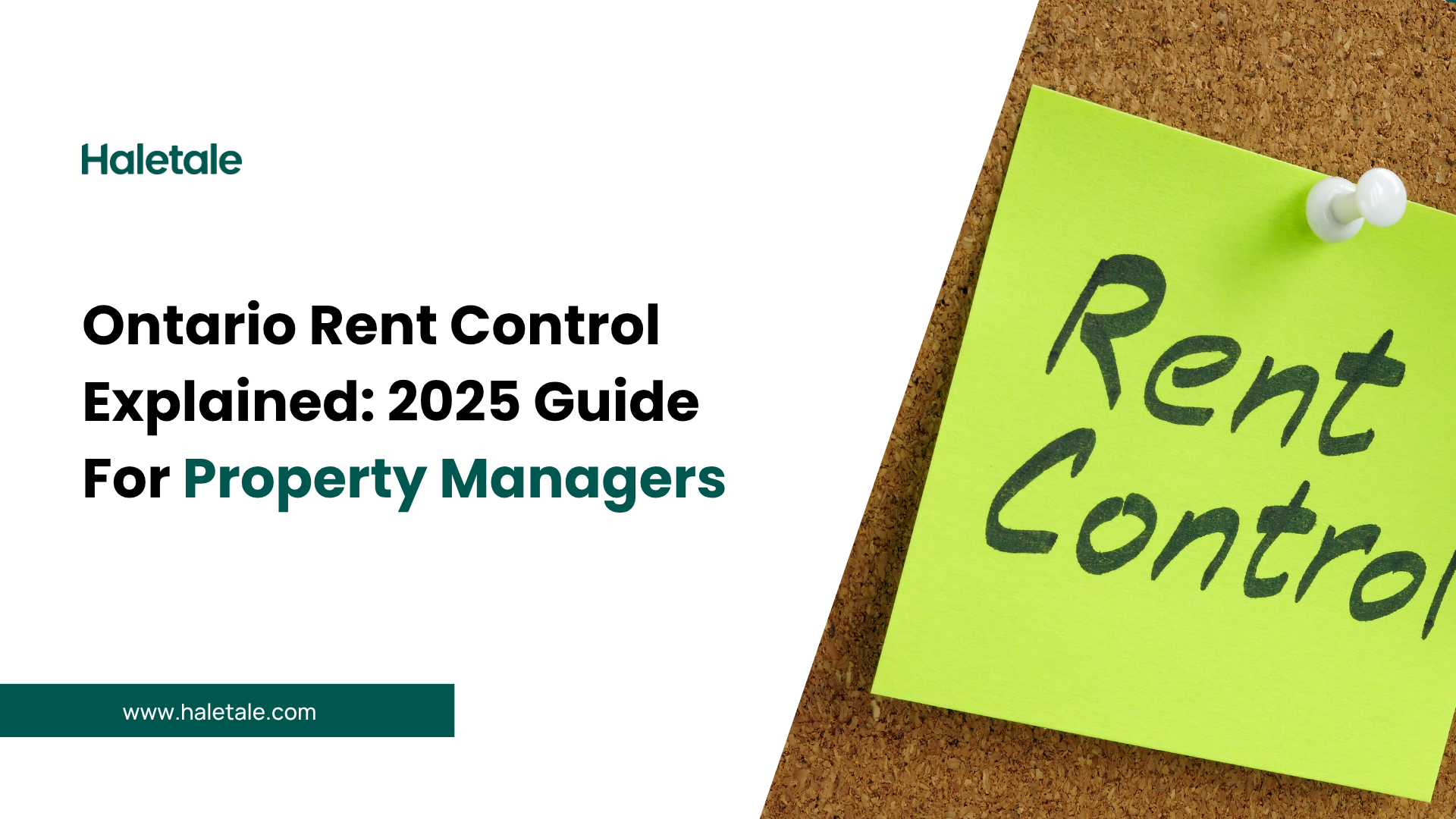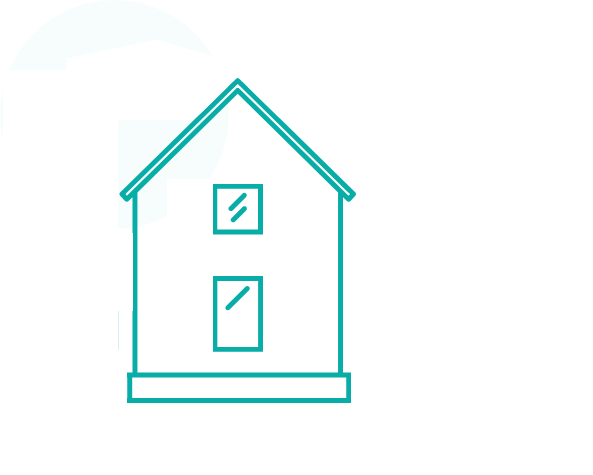Ontario Rent Control Explained: What Property Managers Need to Know for 2025
Navigating Ontario’s rent control laws can be complex for property managers, especially with ongoing regulatory changes and evolving tenant rights. Understanding these regulations is crucial for maintaining compliance, maximizing rental income, and avoiding costly legal disputes. This comprehensive guide breaks down everything property managers need to know about Ontario rent control in 2025.
Understanding Ontario’s Rent Control Framework
Ontario’s rent control system operates under the Residential Tenancies Act (RTA), which governs most rental properties across the province. The system is designed to balance tenant protection with property owner rights, creating a framework that limits rent increases while allowing for reasonable returns on investment.
Property managers must understand that rent control in Ontario applies to most residential rental units, with specific exemptions that we’ll explore later. The key principle is that rent increases are regulated and must follow prescribed guidelines, regardless of market conditions or property improvements in most cases.
Current Rent Increase Guidelines for 2025
For 2025, Ontario’s rent increase guideline is set at 2.5%, representing the maximum amount landlords can increase rent for most tenants without seeking approval from the Landlord and Tenant Board (LTB). This guideline is calculated using the Ontario Consumer Price Index, with data from June to May used to determine the guideline for the following year.
Significantly, the rent increase guideline is capped at 2.5% to prevent significant rent increases, meaning even if inflation rises higher, the government maintains this maximum to protect tenants from excessive rental cost increases.
Property managers should note that this guideline applies to rent increases that take effect between January 1 and December 31, 2025. The increase must be implemented using proper notice procedures, which require at least 90 days written notice using the official forms available from the Landlord and Tenant Board.
It’s important to understand that the rent increase guideline represents a maximum, not a requirement. Property managers can choose to implement smaller increases or no increase at all, depending on their business strategy and tenant relationships.
Looking ahead, the guideline for 2026 is 2.1%, indicating a slight decrease from the current rate.
Which Properties Are Subject to Rent Control
Most residential rental properties in Ontario fall under rent control regulations, but there are notable exceptions that property managers must understand:
Properties Subject to Rent Control:
- Rental units first occupied for residential purposes before November 15, 2018
- Most apartment buildings, houses, and condominiums used as rental properties
- Rent-geared-to-income units in social housing
- Care homes and retirement homes in specific circumstances
Properties Exempt from Rent Control:
- New buildings, additions to existing buildings, and most new basement apartments that are occupied for the first time for residential purposes after November 15, 2018
- Rental units upon turnover of a tenancy (landlord and new tenant can agree on rent amount)
- Community housing units (though they have different rules under the Residential Tenancies Act)
- Long-term care homes
- Commercial properties
- Seasonal or temporary accommodations
- Units where tenants share kitchen or bathroom facilities with the owner
- Some student housing arrangements
Understanding these distinctions is crucial because exempt properties allow for market-rate rent increases between tenancies, while controlled properties maintain rent levels that can only increase according to guidelines.
Above-Guideline Rent Increases: When and How
Property managers may apply for above-guideline increases (AGI) in specific circumstances. These applications require approval from the Landlord and Tenant Board and involve detailed documentation and justification.
Qualifying Reasons for AGI Applications:
- Extraordinary increases in municipal taxes or utility costs
- Eligible capital expenditures that improve the property
- Security services costs in specific situations
- Conversion of heating systems or utilities
The AGI process requires property managers to provide comprehensive documentation, including receipts, contracts, and detailed explanations of how the expenses benefit tenants. The LTB will review applications and may approve increases above the annual guideline if criteria are met.
Property managers should budget for the time and cost associated with AGI applications, as they can take several months to process and may require legal assistance to navigate successfully.
Tenant Rights and Property Manager Obligations
Ontario’s rent control system grants tenants significant rights that property managers must respect. Understanding these rights helps prevent disputes and ensures compliance with provincial regulations.
Key Tenant Rights:
- Protection from illegal rent increases
- Right to receive proper notice of rent increases
- Ability to challenge increases at the LTB
- Protection from eviction for refusing illegal increases
- Right to remain in the unit at current rent if they refuse a legal increase
Property Manager Obligations:
- Provide 90 days written notice using official forms
- Calculate increases accurately based on guidelines
- Maintain detailed records of all rent-related communications
- Respond to tenant inquiries about rent increases
- Comply with LTB orders and decisions
Property managers must also ensure that rent increases are not discriminatory and don’t target specific tenants unfairly. The human rights code applies to all rental relationships, adding another layer of compliance requirements.
Rent Increase Timing and Notice Requirements
Property managers must follow strict timing requirements when implementing rent increases. In most cases, rent can only be increased if at least 12 months have passed since the last rent increase or the date the tenancy began. This ensures tenants have predictable housing costs for a full year.
The landlord must give a tenant written notice of a rent increase in the proper form at least 90 days before it takes effect. The proper forms are available from the Landlord and Tenant Board, and using unofficial forms can invalidate the notice.
If landlords fail to provide proper notice or implement improper increases, tenants can dispute it at the Landlord and Tenant Board within 12 months after the amount was first charged.
Historical Context and Recent Changes
Ontario’s rent control system has evolved significantly over the past decades. The rent increase guideline has varied considerably, from a high of 6.0% in 1992 to 0% in 2021 during the COVID-19 pandemic (which would have been 1.5% without the government-imposed rent freeze).
Recent years have shown the government’s commitment to maintaining the 2.5% cap even when inflation runs higher. For instance, in 2024, while the average inflation rate was 5.9%, the rent increase guideline remained at 2.5%, demonstrating the province’s effort to balance tenant protection with property owner interests.
The historical data shows:
- 2025: 2.5%
- 2024: 2.5%
- 2023: 2.5%
- 2022: 1.2%
- 2021: 0% (COVID-19 rent freeze)
- 2020: 2.2%
This trend indicates a stabilization of rent increase guidelines around the 2.5% mark, providing property managers with more predictable planning parameters.
Proving Exemptions from Rent Control
For properties exempt from rent control, property managers must be prepared to prove exemption status if disputes arise. The Landlord and Tenant Board can help determine whether a unit is exempt, but landlords should maintain comprehensive documentation.
For New Buildings and Additions: Landlords must prove the building or addition was first occupied for residential purposes after November 15, 2018. Important records include:
- Building permits, permit applications, and plans
- Occupancy permits
- New home warranty documents
- Documentation from builders
For New Units in Existing Houses: Landlords must prove the new unit was completed after November 15, 2018, and either:
- The unit was built in previously unfinished space (basement or attic)
- The owner lived in another part of the house when the new unit was first occupied
Essential documentation includes:
- Builder documents or contractor invoices
- “Before and after” photographs
- Building permits and applications
Lease Documentation: Landlords can include an additional term under section 15 of the lease stating that the unit is exempt from the rent increase guideline, providing clear notice to tenants from the beginning of the tenancy.
Common Compliance Mistakes to Avoid
Property managers frequently encounter compliance issues that can result in penalties, legal disputes, and lost rental income. Understanding common mistakes helps prevent costly errors.
Frequent Compliance Errors:
- Implementing increases without proper notice periods
- Using incorrect forms or incomplete information
- Calculating increases incorrectly
- Applying increases to exempt properties incorrectly
- Failing to maintain proper documentation
- Not keeping adequate records to prove exemption status
Best Practices for Compliance:
- Implement systematic tracking of all rent increase dates
- Use official government forms exclusively
- Maintain detailed tenant files with all communications
- Keep comprehensive exemption documentation
- Regularly review current guidelines and regulations
- Seek legal advice for complex situations
Property managers should also establish clear internal procedures for handling rent increases, ensuring all staff members understand the requirements and follow consistent processes.
Impact on Property Management Operations
Rent control significantly affects property management operations, influencing everything from tenant retention strategies to long-term financial planning. Understanding these impacts helps property managers adapt their approaches effectively.
Operational Considerations:
- Tenant turnover strategies must account for rent control limitations
- Maintenance and improvement budgets need careful planning
- Market analysis becomes more complex with controlled vs. exempt units
- Tenant screening processes may need adjustment
- Financial forecasting requires understanding of guideline trends
- Portfolio diversification between controlled and exempt properties
The government’s commitment to maintaining the 2.5% cap, even during periods of higher inflation, provides more predictability for long-term planning. Property managers should develop strategies that work within rent control constraints while maximizing property value and tenant satisfaction. Learn more about property management tips here.
Contact Information and Resources
For questions about rent control compliance, property managers can contact the Landlord and Tenant Board:
- Email: ltb@ontario.ca
- Phone: 416-645-8080
- Toll-free: 1-888-332-3234
The LTB provides official forms, guidance documents, and can help determine whether specific units are exempt from rent control guidelines.
Staying Updated with Regulatory Changes
Ontario’s rent control regulations evolve regularly, with changes to guidelines, forms, and procedures occurring frequently. Property managers must establish systems for staying informed about regulatory updates.
Staying Informed:
- Subscribe to government announcements and updates
- Join professional property management associations
- Attend industry training sessions and webinars
- Consult with legal professionals specializing in landlord-tenant law
- Participate in industry forums and discussions
Conclusion
Ontario’s rent control system requires property managers to balance compliance with business objectives while respecting tenant rights. Success depends on understanding current regulations, implementing proper procedures, and staying informed about ongoing changes.
Property managers who invest time in understanding rent control requirements, implement systematic compliance procedures, and maintain positive tenant relationships will be best positioned for success in Ontario’s regulated rental market. The key is treating rent control as a business parameter to work within, rather than an obstacle to overcome.
By following proper procedures, maintaining detailed documentation, and staying informed about regulatory changes, property managers can navigate Ontario’s rent control system effectively while building sustainable rental property businesses.
Frequently Asked Questions (FAQ)
Q: Can I increase rent by more than 2.5% if my costs have increased significantly?
A: Only with approval from the Landlord and Tenant Board through an Above-Guideline Increase (AGI) application. You must demonstrate extraordinary increases in municipal taxes, utility costs, eligible capital expenditures, or security services that benefit tenants.
Q: What happens if I implement a rent increase without proper notice?
A: The increase is invalid and unenforceable. Tenants can dispute it at the LTB within 12 months, and you may be ordered to refund any overpayments plus interest. Always use official forms and provide 90 days’ notice.
Q: Can I charge market rent when a tenant moves out?
A: Only if the property is exempt from rent control (first occupied after November 15, 2018). For rent-controlled properties, the next tenant’s starting rent is typically the previous rent plus any lawful increases that weren’t implemented.
Q: How do I prove my building is exempt from rent control?
A: Maintain documentation proving first occupancy after November 15, 2018, including building permits, occupancy permits, builder documents, and new home warranty papers. Include exemption language in lease agreements under section 15.
Q: Can I increase rent during a lease term?
A: No, rent increases cannot take effect during a fixed-term lease period. You must wait until at least 12 months after the tenancy began or the last increase, whichever is later.
Q: What if a tenant refuses to pay a lawful rent increase?
A: You can file an application with the LTB for non-payment of rent. However, ensure your increase was properly implemented with correct forms and timing, as improper increases cannot be enforced.
Q: Are short-term rentals subject to rent control?
A: Most short-term rentals under 28 days are not covered by the Residential Tenancies Act and therefore not subject to rent control. However, longer-term rentals may be subject to the Act depending on specific circumstances.
Q: Can I apply multiple rent increases in one year?
A: No, you can only implement one rent increase per 12-month period per tenancy. You cannot “stack” missed increases from previous years.
Q: What’s the difference between rent-controlled and rent-stabilized units?
A: In Ontario, these terms are often used interchangeably. Both refer to units subject to the annual rent increase guideline under the Residential Tenancies Act.
Q: Can I charge additional fees to get around rent control?
A: No, you cannot circumvent rent control by charging additional fees for services previously included in rent. Any charges must be legitimate, separate services not covered by the original lease agreement.










